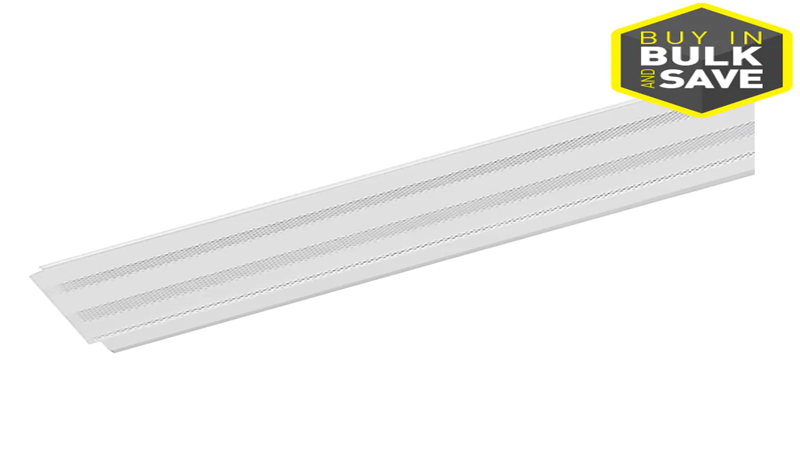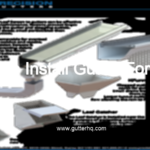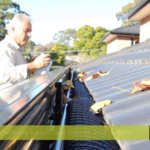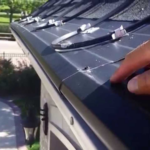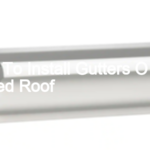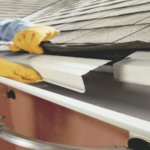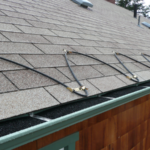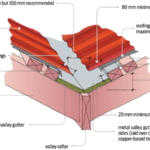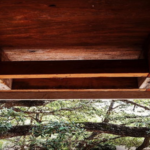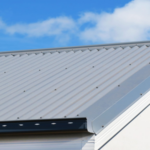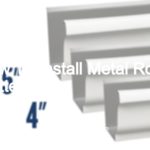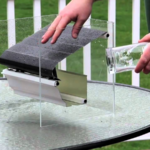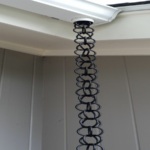- Begin by measuring the length of your roofline. You will need to purchase enough gutters to cover this length, plus an additional 3 feet for each end cap.
- Next, mark the location of the downspouts on the roof. Each downspout will need to be connected to a gutter section, so make sure to allow for this when marking their locations.
- Cut the gutters to length, using a hacksaw. It is important to make sure that the gutters are cut exactly to size, so that they fit snugly against the roof.
- Install the gutter hangers, using screws or nails. Space the hangers evenly, at 12-inch intervals.
- Hang the gutters on the hangers, and then secure them in place with screws or rivets.
- Connect the downspouts to the gutters, using screws or rivets. Make sure that the connections are secure, so that there is no risk of leakage.
- Install the end caps on the gutters, using screws or rivets.
- Test the gutters by pouring a bucket of water into them. The water should flow freely through the gutters and down the downspouts. If it does not, then check the connections and make sure that they are secure.
Can you install gutters on a flat roof?
It is possible to install gutters on a flat roof, but there are a few things to keep in mind. First, the gutters will need to be installed at a slight angle so that water can properly drain. Second, the gutters will need to be installed with a special bracket system that will keep them secure and prevent leaking. Finally, it is important to make sure that the gutters are installed with a proper slope so that water can properly drain away from the roof.
What is the best gutter for a flat roof?
There are a few factors to consider when deciding on the best gutter for a flat roof. The first is the material. Gutters can be made from a variety of materials, including aluminum, plastic, and even copper. Each material has its own advantages and disadvantages, so it’s important to weigh all of the options before making a final decision.
Another factor to consider is the size of the gutters. Gutters come in a variety of sizes, and the size that’s right for your roof will depend on the amount of rainfall you typically get in your area. If you live in an area with a lot of rainfall, you’ll need a larger gutter to accommodate all of the water. On the other hand, if you live in an area with less rainfall, you can get away with a smaller gutter.
Finally, you’ll need to decide on the style of gutter you want. There are several different styles of gutters, including gutters that hang over the edge of the roof (called “box gutters”) and gutters that are flush with the roof (called “flush gutters”). Again, there are pros and cons to each style, so it’s important to weigh all of the options before making a final decision.
Do you need drip edge on a flat roof?
Most building codes require drip edge on a flat roof. The purpose of drip edge is twofold: first, to keep water from running back under the shingles or other roofing material; and second, to provide a place for ice and water to drip off the edge of the roof, away from the building.
How does rain water drain out from a flat roof?
Most flat roofs are not perfectly flat, but have a slight slope to allow water to run off. The slope is typically towards drains or gutters, which are installed at the edges of the roof. The water runs off the roof and into the drains, and is then carried away from the building.
In some cases, the water may not drain properly and will pond on the roof. This can cause problems if the water is allowed to sit for too long, as it can eventually seep into the building and cause damage. To prevent this, it is important to make sure that the drains are clear and functioning properly.
If you live in an area with a lot of rain, you may also want to consider installing a roof drain system. This will help to ensure that the water is properly drained away and will not pond on the roof.
It is also important to keep the gutters and drains clean and free of debris. If they become clogged, it can prevent the water from draining properly and cause it to back up onto the roof.
How does rain fall off a flat roof?
- The rain first hits the flat roof and begins to collect there.
- The weight of the water on the roof eventually causes it to start sliding off in sheets.
- The rainwater then flows off the edge of the roof and falls to the ground.
What type of roof does not need gutters?
A roof that does not need gutters is usually a roof that has a very shallow pitch, or slope. This means that the roof doesn’t shed water very well, so the gutters would just be collecting water that wouldn’t end up going anywhere. Some types of roofs that don’t need gutters are flat roofs and metal roofs.
Can you use gutter guards on a flat roof?
Gutter guards are not recommended for use on flat roofs. While they may keep leaves and debris from clogging the gutters, they can also trap water on the roof, which can lead to leaks and other problems.
Conclusion
If you’re looking to install gutters on a flat roof, there are a few things you’ll need to keep in mind. Make sure you choose a material that can withstand the elements and that you have a good drainage system in place. With a little bit of planning and the right tools, you can easily install gutters on a flat roof.
